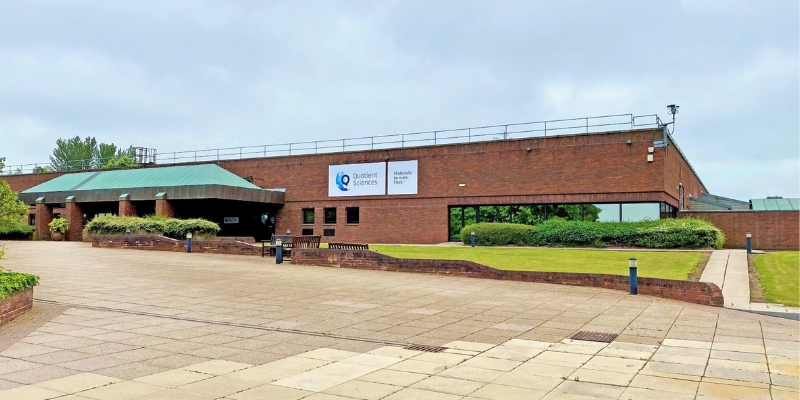Drug Development & Delivery spoke with Nazim Kanji, Executive Director, Pediatric Services, about the unique considerations and challenges when developing palatable pediatric formulations, so that molecules can become cures, fast.
Quotient Sciences: Unique Considerations & Challenges When Developing Palatable Pediatric Formulations
Read highlights from the article below. For the full article, visit Drug Development & Delivery.
The demand for pediatric dosage forms continues to increase; however, the number of approved pediatric drug treatments on the market remains substantially less than those for adults. Developing drug products for pediatric patients brings a whole set of unique challenges for development teams. Formulation scientists must consider the route of administration, the safety profile, overall taste and palatability, the child’s age, weight, physiologic condition, and the treatment plan’s requirements. All these key factors must be balanced for developing a pediatric product that garners clinical, regulatory, and commercial success.
Quotient Sciences, a drug development and manufacturing accelerator, has extensive experience in developing palatable pediatric formulations on behalf of pharmaceutical and biotech customers globally and has successfully developed customized pediatric pharmaceutical formulations that have received regulatory approval.
Q: What are the regulatory considerations when developing a pediatric formulation, including US and EU incentives, guidance, and requirements?
A: Historically, drug products used in children were generally only approved for adults. They were rarely tested in pediatric populations, and product labelling did not include directions for safe and effective use in pediatric patients. Furthermore, the correct dose and excipient safety were generally not determined for target age groups, and there was a distinct lack of age-appropriate formulations, which meant that in many cases, manipulation of the adult product would be required to dose children.
Pediatric legislation in the form of The Best Pharmaceuticals for Children Act and Pediatric Research Equity Act in the US and the Paediatric Regulation in the EU came into effect between 2002 and 2007. The aim of these regulations was to increase the number of products that were approved for pediatric use, and they sought to do this by mandating companies to undertake pediatric research and development as well as providing financial incentives for them if they invested in doing this work.
Both the US and EU regulations require the submission of pediatric plans at given points in the adult development – in the EU, a Paediatric Investigation Plan (PIP) is to be submitted no later than the end of human pharmacokinetic (PK) studies in adults, while the US requires a Pediatric Study Plan (PSP) to be submitted within 60 days of the end-of-Phase 2 meeting. These documents give a commitment to the studies that will be conducted and also the timeframe.
Q: What are product considerations when developing patient-centric dosage forms that are acceptable and palatable for pediatric populations?
A: To meet patient needs and regulatory expectations, there are several key steps for consideration in the development of a pediatric dosage form. First is the design stage, to understand the target product profile for the defined population(s) along with associated challenges and risks. Formulation development is then required to identify acceptable, age-appropriate dosage form(s). Depending upon the active pharmaceutical ingredient (API) characteristics and formulation strategy, a key factor here, of course, may be taste masking.
Next is typically a clinical assessment of the proposed pediatric formulations in adult panels to understand, optimize, and clinically validate dosage forms based on taste and/or PK attributes prior to proceeding into pediatric trials. These efficacy studies often present the development team with unique challenges given bespoke patient requirements that can put a strain on traditional product manufacturing and supply logistics. Finally, there may also be the need to identify a long-term manufacturing partner for what may be low-volume commercial products.
Clearly, there is plenty to think about on this journey!
Q: How can physiologically based pharmacokinetic (PBPK) modeling and simulation be used for dose extrapolation from adults to children and to predict drug product performance in children?
A: There are unique biopharmaceutics considerations concerning in vivo drug and formulation performance in pediatrics given differences in anatomy and physiology when compared to adults – gastric and intestinal factors around pH, transit, surface area, enzyme expression, and microflora can all influence oral bioavailability of some drugs differently in the pediatric population.
At Quotient Sciences, we use GastroPlus® to build PBPK models. To build a robust model for pediatric dose predictions, there is firstly a need to build a robust PBPK model to represent the adult situation. The PBPK model is built on clinical data from a range of studies, eg, SAD, MAD, DDI, food effect, and where possible, different formulations and dosing regimens along with supporting in vitro data. The model must be validated with clinical data independent to that used to build the model to ensure robustness. PBPK models allow the gastrointestinal environment to be tailored so it more closely represents the pediatric physiology and can be used to predict exposure in children from alternative dose formats and/or formulation attributes.
Other factors, such as varying percentages of body water and body fat (which influence tissue distribution kinetics), differences in protein binding, relative blood flows, and size of organs relative to total body weight, are also considered in the pediatric physiologies used in PBPK modeling.
Q: What are some challenges drug developers should be aware of when dealing with taste masking, taste modification, and alternate dosage forms?
A: A common problem in pediatric drug development is that drug substances can be very bitter or have other aversive taste attributes. A key challenge is understanding how to effectively mask these taste properties to ensure patient compliance, especially if the end drug product is intended for pediatric populations who are not able to swallow conventional dosage forms such as tablets and capsules. This can impact drugs across all therapeutic areas and can be influenced by several factors, including the chemical structure of the drug substance, solubility, and dose. It is important to understand the taste characteristics of a drug substance early in the development of a pediatric dose form to aid the selection of an age-appropriate formulation and associated taste-masking strategy.
For the full article, visit Drug Development & Delivery.


